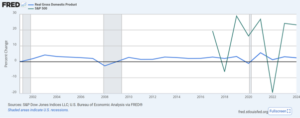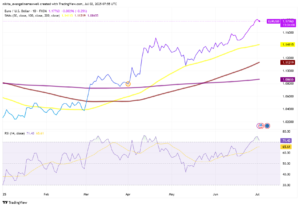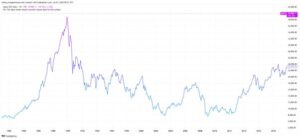President Donald Trump has officially signed an order imposing 25% tariffs on steel and aluminum imports, set to take effect on March 4. These tariffs aim to protect U.S. industries but have sparked concerns over global trade disruptions. While the U.S. steel and aluminum sectors could benefit from reduced foreign competition, key exporting countries such as Canada, Mexico, Germany, and several Asian nations stand to lose from the policy.
Winners: The U.S. Steel and Aluminum Industries
One of the biggest winners of these tariffs is the United States itself. Over the past decade, U.S. steel imports have fallen by 35%, largely due to previous tariffs implemented by Trump in his first term. However, aluminum imports have risen by 14%, indicating strong demand. Analysts expect the new tariffs to initially disrupt demand but could lead to increased domestic investment in the long run.
During Trump’s first presidency, similar tariffs encouraged growth in the U.S. steel and aluminum sectors. The U.S. government also collected over $1.4 billion in tariff revenue within the first five months of the 2018 policy. With imports from 79 countries supplying steel and 89 countries supplying aluminum, the U.S. has significant global trade exposure. The new tariffs could further reshape supply chains as companies adjust to higher import costs.
Losers: Canada and Mexico
Canada and Mexico are among the largest exporters of steel and aluminum to the U.S. In 2024 alone, Canada supplied 79% of the U.S.’s aluminum imports. While temporary exemptions may be granted, the tariffs still pose a significant challenge for these economies, potentially reducing exports and impacting domestic producers.
Germany’s Limited Exposure
Germany, another major steel supplier to the U.S., will also be affected. However, Thyssenkrupp, one of Europe’s largest steel manufacturers, stated that it expects only a limited impact. The company primarily focuses on high-quality niche steel products in the U.S. and maintains strong local manufacturing. Most of its revenue in the U.S. comes from trading and automotive supply businesses, which are less directly affected by the tariffs.
Asian Exporters at Risk
Several Asian countries, including South Korea, Vietnam, Japan, and Taiwan, are also vulnerable. Steel imports from Vietnam surged by over 140% in 2024, while Taiwan increased its steel exports to the U.S. by 75% year-over-year. These nations may face significant challenges if the tariffs remain in place, potentially forcing manufacturers to seek alternative markets.
While the long-term effects remain uncertain, Trump’s tariff policy is expected to reshape global trade relationships and impact industries worldwide. Companies and governments affected by the tariffs may explore countermeasures or negotiate new trade agreements in response to these protectionist policies.





